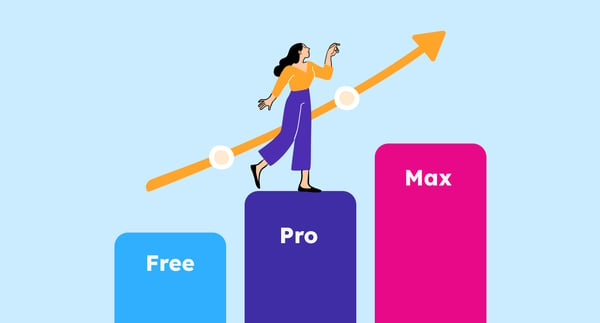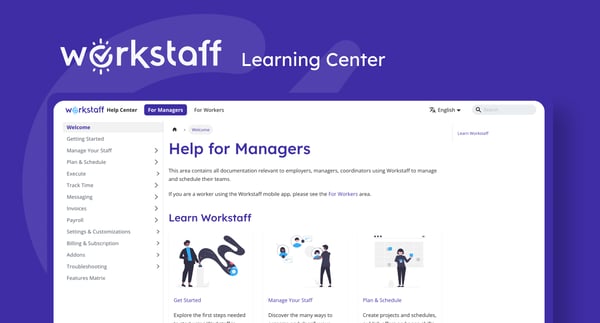Effective workforce management is crucial for companies looking to remain competitive in today's fast-paced business world. Organizations can struggle to meet their business objectives without the proper staffing and resource allocation, leading to lost productivity and revenue.
However, implementing a staffing model can help companies overcome these challenges. A staffing model can ensure that organizations have the correct number of employees with the necessary skills and experience to meet objectives most efficiently and cost-effectively as possible by providing a structured approach to workforce planning and management.
What Is the Definition of a Staffing Model?
A staffing model is a comprehensive plan or strategy that outlines how a company will meet its staffing needs, including temporary or contingent staff. It involves analyzing workforce requirements, identifying the skills and experience required for each role, and developing a plan to ensure the company has the right people in the right positions at the right time.
A structured staffing model can help companies optimize workforce management by providing an organized approach to hiring, scheduling, and managing staff. Which in return can also help reduce costs, increase productivity, and improve overall efficiency.
What Is the Purpose of a Staffing Model?
A staffing model is a valuable tool for organizations, as it provides a framework for assessing staffing needs and helps companies identify areas where they may be over- or understaffed and adjust accordingly. This can lead to more efficient and cost-effective use of personnel resources, ultimately improving an organization's bottom line.
In addition to helping organizations optimize their staffing levels, a well-defined staffing model can help streamline the hiring process and reduce turnover. By providing a clear understanding of the required roles, skills, and experience needed to meet business objectives, a staffing model can make it easier for organizations to identify and attract the right talent.
Industries that rely heavily on temporary or contingent staff, such as staffing agencies, can particularly benefit from implementing a staffing model. Temp agencies can use it to assess their clients' temporary staffing needs to ensure they have enough workers with the necessary skills and experience to meet these needs. This can improve client satisfaction and help agencies maintain a strong reputation within their industry.
5 Different Types of Staffing Models
Different staffing models exist, and companies should choose the model that best fits their hiring needs. One or a combination of models can be used depending on a company's business plan.
-
Full-Time Employee Model: Involves hiring permanent employees who work full-time hours and receive benefits and job security.
-
Temporary Staffing Model: Requires supplementing a company's existing workforce with temporary or contingent staff hired on a short-term basis to fill a specific role, such as working on a particular project.
-
Consultation Model: Requires hiring outside consultants to provide expertise on a particular subject, project, or business area.
-
Outsourcing Model: Involves contracting with outside companies to handle specific business functions or processes. Third-party companies can be both onsite or offsite.
-
Hybrid Model: This model involves combining different staffing models to meet a company's specific needs. For instance, a company may use full-time employees for core business functions, temporary staff for seasonal work, and outsourcing for specific specialized tasks.
How to Develop a Staffing Model
When developing a staffing model, there are several key steps that companies can follow to ensure success:
-
Evaluate Company Goals: The first step is to evaluate company goals and objectives to ensure the best staffing model is being used to reach these goals.
-
Determine Current Staffing Situation: Organizations must assess their current workforce and identify areas where they may be over- or understaffed. In addition, evaluating the quality of existing staff can help identify areas where improvement may be required.
-
Forecast Future Staffing Needs: Once an assessment of the current situation has been determined, the next step is forecasting future staffing needs. This will require analyzing factors such as expected growth, seasonal fluctuations, and changes in demand for products or services.
-
Conduct a Gap Analysis: Conducting a gap analysis to identify any staffing shortfalls helps organizations determine how many temp staff they need to hire and when.
-
Create the Plan: The final step requires creating a detailed plan for implementing a staffing model. The plan should include timelines, staffing requirements, and necessary training or support. Organizations will also want to establish a process for ongoing evaluation and improvement of their staffing model to ensure it continues evolving and meeting their business needs over time.
By following these steps, companies, including agencies that rely on a contingent workforce, can develop an effective staffing model to achieve their business objectives and stay competitive.
Final Thoughts
Implementing a staffing model is one of the most critical aspects of workforce management for companies and agencies looking to optimize their workforce and achieve their business goals.
If you're looking for ways to improve productivity and the efficiency of leading a contingent workforce, having the right staffing software can streamline your staffing process, from recruiting to scheduling and managing staff. Reach out to Workstaff, a staffing app developer, to learn more about simplifying your staffing needs.







